Very old and long. Because negative numbers are something ephemeral, unreal, people for a long time did not recognize their existence.
It all started in China, around II century BC Perhaps they were known in China before, but the first mention dates back to that time. There they began to use negative numbers and considered them “debts”, while calling them “property”. The record that exists now did not exist then, and negative numbers were written in black, and positive numbers in red.
If we multiply these numbers, we get. So our new orientation is the western division and the 7 northern divisions that you can draw and follow. And look how cool it is; we find the result in 10 seconds, not to mention breasts and cosines. We don't use vectors, matrices or worry about which quadrant we have. We only use arithmetic with algebra mapping for transverse multiplication. Imaginary numbers add rotation rules: everything works well.
And even better, the result is useful. How exactly did you plan to draw and follow this angle? Do you carry a protractor in your pocket? No, you will have to convert it to cosine and sine, find an acceptable reason between them and sketch the triangle. Complex numbers make your life easier, instantly, accurately and without a calculator.
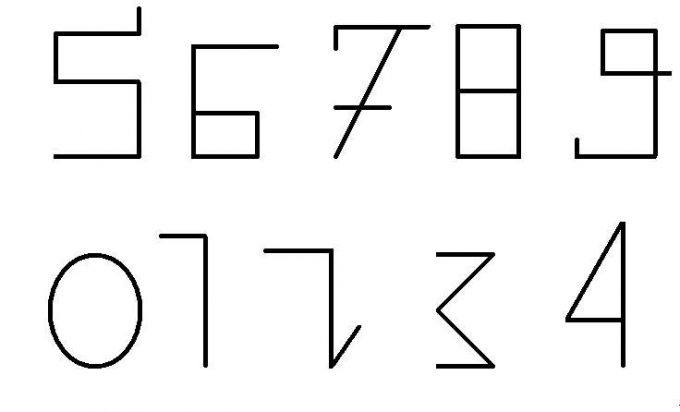
We find the first mention of negative numbers in the book “Mathematics in Nine Chapters” by the Chinese scientist Zhang Can.
Next, in V-VI centuries, negative numbers began to be used quite widely in China and India. True, in China they were still treated with caution and tried to minimize their use, but in India, on the contrary, they were used very widely. There calculations were made with them and negative numbers did not seem incomprehensible.
If you're like me, you'll find this use of complex numbers a miracle. Sorry. This is just the entrance; in the following articles you will get the complete dish. What is the angle from the base of your little finger to the top of your index finger? It was a “cyclonic” tour of my core intuitions. Take a look at the first frame - it should make sense now.
There is so much more to show these beautiful and crazy numbers, but my brain is tired. Having convinced you that complex numbers are considered "crazy" but they can be useful; Show how complex numbers can alleviate some problems, for example by using turns. If I think this topic is troubling, there is a reason. Imaginary numbers have been a fly in my soup for years - the lack of intuitive insight into them has frustrated me.
Famous Indian scientists Brahmagupta Bhaskara ( VII-VIII centuries), who left detailed explanations of working with negative numbers in their teachings.
And in Antiquity, for example, in Babylon and Ancient Egypt, negative numbers were not used at all. And if the calculation resulted in a negative number, it was considered that there was no solution.
We swallow our doubts and “move on” because we do not strive for or share more intuitive ideals. But it is better to light a candle than to complain about the darkness: here are my thoughts, and one of you will look into the point of light. Thinking that we already understand “everything” about a topic like numbers causes us to revert to old ideas.
Details of complex arithmetic. Happy math. Zero is a rather strange idea in that "something" represents "nothing", and this was not understood by the Romans. Complex numbers are similar - they are new way thinking. But both zero and complex numbers greatly simplify mathematics. If we did not adopt new numerical systems, we would still be counting on our fingers.
Likewise, in Europe negative numbers were not recognized for a very long time. They were considered “imaginary” and “absurd.” They did not perform any actions with them, but simply discarded them if the answer was negative. They believed that if you subtract any number from 0, then the answer will be 0, since nothing can be less than zero - emptiness.
For the first time in Europe, Leonardo of Pisa (Fibonacci) turned his attention to negative numbers. And he described them in his work “The Book of Abacus” in 1202.
I repeat this analogy because it is so easy to start thinking that complex numbers are not “normal.” Let's keep our minds open: in the future everyone will laugh at the idea that complex numbers not taken seriously, even in those years. Despite the high osmotic pressure inside the bacterial cytoplasm, the bacterium does not explode due to the existence of a rigid structure called a polymer wall. The polymers and the way they bind vary depending on the type of bacteria. However, the main bacteria-specific substance is present throughout: murine, also known as peptidoglycan.
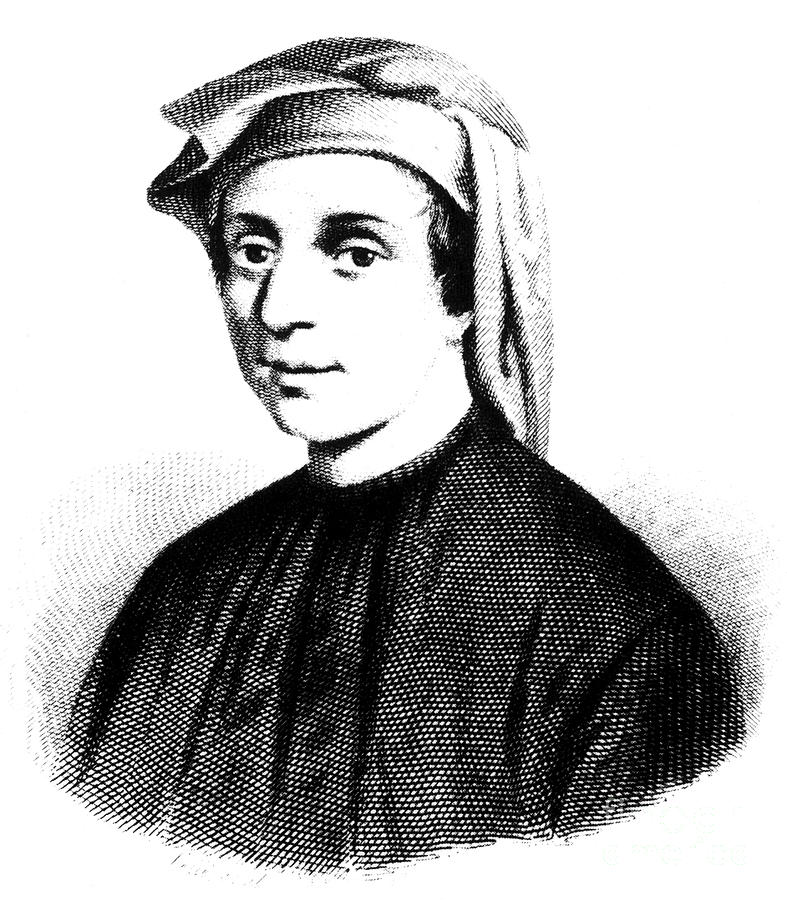
Later, in 1544, Mikhail Stiefel, in his book “Complete Arithmetic,” first introduced the concept of negative numbers and described in detail the operations with them. “Zero is between the absurd and the true numbers.”
And in the XVII century, mathematician Rene Descartes proposed putting negative numbers on the digital axis to the left of zero.
Peptidoglycan is a complex polymer consisting of 3 various elements. The backbone is the same for all bacterial species, while the tetrapeptide side chains and interpeptide bridges vary from species to species. Gram-positive bacteria have numerous layers of peptidoglycan that make up up to 90% of the bacterial wall, which also contains a felt of teichoic acids closely associated with the peptidoglycan and sometimes protruding the surface area of the bacterium. Some lipoteichoic acids are arranged transversely. and immerse themselves in the cytoplasmic membrane.

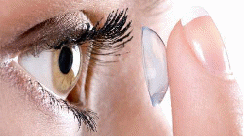
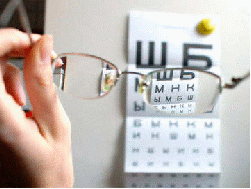
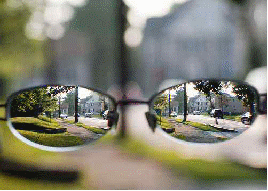


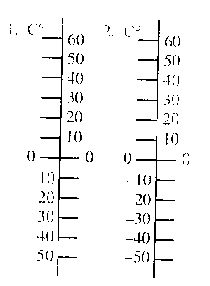
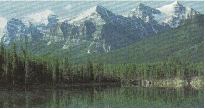

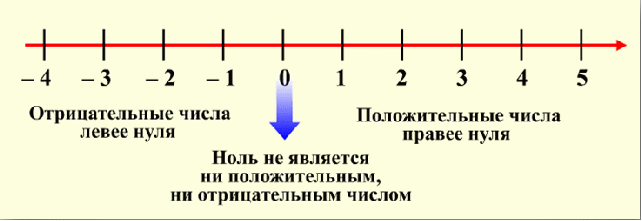
Associated within this “outer membrane,” which is a fluid mosaic, are at least two types of specific proteins: some are called structural proteins because they hold the outer membrane together; Others, called "porins", allow the passage of small hydrophilic molecules and, in particular, from a medical point of view, antibiotics. It represents the external skeleton of the bacterium and accounts for 25 to 35% of the total mass of bacteria. Without a wall, the bacteria takes on a spherical shape, called a protoplast if it is a gram-positive bacterium or a spheroplast if it is a gram-negative bacterium. Bacteria can survive without walls and even reproduce, provided they are placed in an environment whose osmotic pressure is balanced with the osmotic pressure that prevails inside the bacterium. It plays a crucial role in the coloration of gram. In gram-positive bacteria, the wall blocks the extraction of gentane violet and iodide alcohols, while it does not block this extraction in gram-negative bacteria.
- The wall gives the bacterium its true morphology.
- The wall contains internal osmotic pressure.
Chapter II. Negative numbers in other sciences
§1. Negative numbers in physics…………………………………………………...5
1.1 An ordinary comb and positive and negative numbers………………….6
1.2 With positive and negative numbers on the temperature scale...7
§2. Negative numbers in geography
2.1 Behind positive and negative numbers to mountain peaks and to the depths of the sea………………………………………………………………………………….8
2.2 Scale of depths and heights in meters………………………………………………………………...9
In capsulated bacterial species, mutations can affect capsule production: capsulated wild-type bacteria produce smooth or slimy colonies, while non-capsulated mutant bacteria produce rough colonies. Transient changes may also affect it since capsule production is often dependent on the presence of high concentrations of sugars or whey.
The capsule plays an important role in the pathogenicity of some bacterial species due to its protective role against phagocytosis. Eyelashes or flagella are non-permanent structures of bacteria. They are filamentous appendages composed entirely of proteins, ranging from 6 to 15 microns in length and 12 to 30 nanometers in thickness. Flagellar proteins are called flagellins.
2.3 Height scale in meters………………………………………………………………..9
§3. Negative numbers in history
3.1 How were years counted in ancient times? ………………………………………………………….....10
§ 4. Negative numbers in biology…………………………………………………………….11
Conclusion……………………………………………………………………………………….12
Appendix………………………………………………………………………………………13
Flagella are attached to the bacterial cytoplasm by a complex structure and are locomotive organs for bacteria that possess them. monotrophy, lorography or peritrics. Many Gram-negative bacteria have superficial appendages that are shorter and thinner than flagella, called pili or fimbriae, and fall into two categories.
They drank in common. Common pili are thread-like protein structures, 2 to 3 µm long, that are regularly distributed on the surface of bacteria. They consist of the polymerization of the same polypeptide subunit, pilin, assembled with small polypeptides including adhesin. Adgemin may have an interaction with the hydrocarbon cell receptor present on the surface of the eukaryotic cell. Because the support of adhesin pili allows the attachment of certain bacteria to the mucous membranes, which determines their pathogenicity.
References………………...……………………………………………………....................... ....14
Introduction
“Your mind is nothing without numbers.” This statement by the German philosopher N. Cusanus (1401 - 1464) shows the role any numbers play in our lives, therefore the topic is “negative numbers” relevant.
I was assigned to prepare the message “The History of Negative Numbers.” As I studied the literature, I realized that negative numbers arose from the practical needs of people. With their appearance there was a great impetus for the development of science. In my mind, the smallest number was 0, i.e. nothing, but it turns out that there are still numbers less than 0. I wanted to understand the essence of negative numbers, why people need them, and I decided to leaf through school textbooks, find out the use of negative numbers in various lessons.
My theme called “Negative Numbers on the Pages of School Textbooks.”
The genetic structures encoding pili-Adhesin complexes are operons on a plasmid or chromosome. Sexual fimbriae, longer in number but smaller in number than the common columns, are encoded by plasmids and play an essential role in the attachment of bacteria to each other during conjugation. These sex pills also serve as receptors for specific bacteriophages. In some gram-positive bacteria, surface proteins are behind the wall and play a role in bacterial adhesion, as fimbriae that could digest.
Relevance: any number plays an important role in the life of every person
Purpose of the work: Study the history of negative numbers, and explore the use of negative numbers in various lessons.
Object of study is the number.
Research method– reading and analysis of used literature and observations.
Sporulated bacteria undergo a cycle of differentiation in response to environmental conditions: in the absence of food, a spore is formed in each bacterium and released during autolysis of the bacteria. bacteria in a dormant state, is very resistant to desiccation, heat and chemicals and is transplanted under favorable nutritional conditions, the spore germinates and regenerates a bacterium identical to the one that gave birth to it. unfavorable living conditions, with the preservation of all genetically determined abilities.
Some bacterial species synthesize large amounts of glycocalyx and bind to bacterial cells. The glycocalyx is called "mucilage". The production of glycocalyx promotes the adhesion of bacteria such as foreign materials. The one produced by streptococci is responsible for the formation of dental plaque, caries is indirectly responsible.
Sample: Textbooks of physics, geography, biology, history.
Tasks:
1. Study the literature on this topic.
2. Understand the essence of negative numbers.
3. Explore the use of negative numbers in physics, geography, history and biology.
4. Give a message to the students in the class.
Chapter 1. The history of negative numbers.
The science of classifying people is called taxonomy or systematics. Classification forms groups of individuals that are called similar according to certain criteria and excludes those that form another group. Two or more taxa may be grouped into a new higher-level taxon. Taxonomy is essential for the identification and nomenclature of bacterial strains. The rules applied are those laid down by Linne in the hierarchical levels of kingship, class, order, family, gens and species.
The first ideas about negative numbers arose before our era. So, in the 2nd century. BC Chinese scientist Zhang Can, in his book “Arithmetic in Nine Chapters,” provides rules for dealing with negative numbers, which he understands as debt, and positive ones as property. He wrote down negative numbers using ink of a different color from positive ones.
In common practice, both the genus and the species are sufficient. The original gender is written in uppercase, the remainder in lowercase as a species name, even if it comes from the person's own name and without a hyphen, even if it is formed from two words. Thus, you need to write and pronounce, for example. The following is a very brief summary, the purpose is not to make a detailed classification! Stain grading allows the separation of thick-walled bacteria from thin-walled bacteria.
Mounting bacteria on a microscopic slide. - first dye: “Gentian violet” - meadow etching. At this stage, all bacteria are purple. - alcohol washing, which discolors only thin-walled bacteria - excessive fuchsin staining, which recolors discolored bacteria.
In the 3rd century. AD The ancient Greek mathematician Diophantus actually used negative numbers, considering them as “subtracted” and positive numbers as “added”. In ancient times, Indian scientists used negative numbers in trade calculations. If you have 4,000 rubles and buy goods for 1,000 rubles, then you have 4,000 – 1,000 = 3,000 rubles left. But if you have 4,000 rubles and buy goods for 6,000 rubles, then you will have a debt of 2,000 rubles. Therefore, in this case, it was believed that a subtraction of 4000 – 6000 was performed, the result being the number 2000 with a minus sign, meaning “two thousand debt.” Thus, – 2000 is a negative number and in in this case it indicates that you have a debt of 2000 rubles. Indian mathematician Brahmagupta in the 7th century. formulated rules for operating on positive and negative numbers. In Western Europe, negative numbers began to be used only around the 13th century. At the same time, they were designated by words or abbreviated words as names in named numbers. Only at the beginning of the 19th century. negative numbers have gained universal acceptance and modern form designations.
After Gram staining, thick-walled bacteria are purple in color and are called "Gram-positive", while small-walled bacteria are colored red and are called "Gram-negative". Plasmids are extrachromosomal circular elements that are manufactured and carry information. They are autonomous and replicate independently of the chromosome.
They are formed from a protein: pilin. Sex pili, which are longer, connect two bacteria and are pathways for the exchange of genetic material. Bacteria that can produce sexual pili are called "male" bacteria rather than "female" bacteria.
More modern example can be done using actions with the telephone balance. If there is no money in your phone account, then you can use communication services on credit, then a negative balance may form on your phone. For example: -45 rubles (minus 45 rubles).
The introduction of negative numbers was associated with the need to develop mathematics as a science that provides general methods for solving arithmetic problems, regardless of the specific content and initial numerical data. The need to introduce negative numbers into algebra already arises when solving problems that reduce to linear equations with one unknown. In India back in the 6th-11th centuries. Negative numbers were systematically used in problem solving and were interpreted in much the same way as they are today.
If bacteria find themselves in unfavorable conditions, gram baricytes form highly resistant spores, which contain part of the dehydrated cytoplasm in condensed form; The spore situation is characteristic of the species. If the spores are in favorable conditions, they return to the state of functional bacteria: this is germination.
Bacterial fission: This is done by bipartisanship in general
This growth method is of exponential type and is performed according to the following scheme. The termination of the exponential phase is due to a factor that can be: - the disappearance of a connection necessary for nutrition; - a regulatory mechanism, often the end product of a reaction, which, when it reaches a certain concentration, is toxic to bacteria. The mechanism of competition. Physico-chemical variations of the environment. Presence of chemical agents or the like.
In European science, negative numbers finally came into use only since the time of the French mathematician R. Descartes (1596 - 1650), who gave a geometric interpretation of negative numbers as directed segments. In 1637 he introduced the "coordinate line".
Chapter 2. Negative numbers in other sciences.
§ 1 Negative numbers in physics
Every physicist constantly deals with numbers: he always measures, calculates, calculates something. Everywhere in his papers there are numbers, numbers and numbers. If you look closely at the physicist’s notes, you will find that when writing numbers, he often uses the signs “+” and “-”.
How do positive, and especially negative numbers arise in physics?
A physicist deals with various physical quantities that describe the various properties of objects and phenomena around us. The height of a building, the distance from school to home, the mass and temperature of the human body, the speed of a car, the volume of a can, the strength of an electric current, the refractive index of water, the power of a nuclear explosion, the duration of a lesson or recess, the electric charge of a metal ball - all these are examples of physical quantities. A physical quantity can be measured.
For example, the height of a building and the distance from school to home can be measured with a tape measure (ruler), body weight with a lever scale, temperature with a thermometer, car speed with a speedometer, volume of a jar with a beaker, current strength with an ammeter or galvanometer, refractive index of water with a refractometer, the voltage between the electrodes - with a voltmeter, the duration of the lesson - in hours, the power of a nuclear explosion - with a seismograph, the electric charge of the ball - with an electrometer or ballistic galvanometer.
So the numbers in physics arise as a result of measuring physical quantities, and the numerical value of a physical quantity obtained as a result of measurement depends: on how this physical quantity is defined; on the units of measurement used.
§ 1.1 A regular comb and positive and negative numbers
Let's do the experiment.
Place a few small pieces on the table thin paper. Take a clean, dry plastic comb and run it through your hair 2-3 times. When combing your hair, you should hear a slight crackling sound. Then slowly move the comb towards the scraps of paper. You will see that they are first attracted to the comb and then repelled from it.
Now roll up two tubes 2-3 cm long from thin paper (preferably tissue paper). and a diameter of 0.5 cm. Hang them side by side (so that they lightly touch each other) on silk threads. After combing your hair, touch the paper tubes with the comb - they will immediately move apart and remain in this position (that is, the threads will be deflected). We see that the tubes repel each other.
If you have a glass rod (or tube, or test tube) and a piece of silk fabric, then the experiments can be continued.
Rub the stick on the silk and bring it to the scraps of paper - they will begin to “jump” onto the stick in the same way as on the comb, and then slide off it. The stream of water is also deflected by a glass rod, and paper straws, which you touched with a wand, repel each other.
Now take one stick, which you touched with a comb, and the second tube, and bring it to each other. You will see that they are attracted to each other. So, in these experiments, attractive and repulsive forces are manifested. In experiments, we saw that charged objects (physicists say charged bodies) can be attracted to each other, and can also repel each other. This is explained by the fact that there are two types, two types of electric charges, and charges of the same type repel each other, and charges different types are attracted.
§1. 2 With positive and negative numbers on a temperature scale
Let's look at the scale of a regular outdoor thermometer.
It has the form shown on scale 1. Only positive numbers are printed on it, and therefore, when indicating the numerical value of the temperature, it is necessary to additionally explain 20 degrees Celsius (above zero). This is inconvenient for physicists - after all, you can’t put words into a formula! Therefore, in physics a scale with negative numbers is used (scale 2).
Ice temperature is expressed as a negative number.
Cold warm
(-) (+)
§2 . Negative numbers in geography
2.1 Positive and negative numbers in mountain peaks and in the depths of the sea
Let's look at the physical map of the world. The land areas on it are painted in various shades of green and brown colors, and the seas and oceans are painted blue and blue. Each color has its own height (for land) or depth (for seas and oceans). A scale of depths and heights is drawn on the map, which shows what height (depth) a particular color means, for example, this:
2.2 Scale of depths and heights in meters
Deeper 5000 2000 200 0 200 1000 2000 4000 higher
On this scale we see only positive numbers and zero. The height (and depth too) at which the surface of the water in the World Ocean is located is taken as zero. Using only non-negative numbers in this scale is inconvenient for a mathematician or physicist. The physicist comes up with such a scale.
2.3 Height scale in meters
Less -5000 -2000 -200 0 200 1000 2000 4000 more
Using such a scale, it is enough to indicate the number without any additional words: positive numbers correspond to various places on land located above the surface of the sea; negative numbers correspond to points below the sea surface.
In the height scale we considered, the height of the water surface in the World Ocean is taken as zero. This scale is used in geodesy and cartography.
In contrast, in everyday life we usually take the height of the earth’s surface (in the place where we are) as zero height.
§3 . Negative numbers in history
3.1 How were years counted in ancient times?
IN different countries differently. For example, in Ancient Egypt, every time a new king began to rule, the counting of years began anew. The first year of the king's reign was considered the first year, the second - the second, and so on. When this king died and a new one came to power, the first year began again, then the second, the third. The counting of years used by the inhabitants of one of the most ancient cities in the world, Rome, was different. The Romans considered the year the city was founded to be the first, the next year to be the second, and so on.
The counting of years that we use arose a long time ago and is associated with the veneration of Jesus Christ, the founder of the Christian religion. Counting years from the birth of Jesus Christ was gradually adopted in different countries. In our country, it was introduced by Tsar Peter the Great three hundred years ago. We call the time calculated from the Nativity of Christ OUR ERA (and we write it in abbreviated form NE). Our era continues for two thousand years. Consider the “time line” in the figure.
"Timeline"
BC Common Era
776 55 1380 1637 2013
Home Construction Battle of Kulikovo
The ancient theater of Pompey P. Descartes introduced 100 years since the day
Olympic in Rome birth coordinate
games in Greece direct poet
S. V. Mikhalkova
§4 . Negative numbers in biology
Negative numbers in biology express eye pathology. Myopia (myopia) is manifested by decreased visual acuity. In order for the eye to see distant objects clearly in case of myopia, diverging (negative) lenses are used.
Conclusion
It is impossible to understand the essence of negative numbers without the history of their origin. By doing this work, I significantly expanded my knowledge of mathematics. I prepared an essay and presentation on the topic “Negative numbers in school textbooks” and made a presentation in my class.
Working with the sources, I found out that positive and negative numbers are used to describe changes in quantities. If a quantity increases, then its change is said to be positive (+), and if it decreases, then the change is called negative (–).
I learned that negative numbers are most common in the exact sciences, mathematics and physics.
In physics, negative numbers arise as a result of measurements and calculations of physical quantities. Negative number - shows the amount of electric charge: positively charged atoms - protons, negatively charged atoms are electrons.
In geography, the height of mountains is measured using positive numbers, and the depth of water using negative numbers (below sea level, above sea level).
In biology, negative numbers in biology express vision pathology. In order for the eye to see distant objects clearly in case of myopia, diverging (negative) lenses are used.
In history, a negative number can be replaced with words, for example: 145 BC.
Negative numbers appeared much later than positive ones. Negative numbers usually denoted debt. This is probably why a person perceives the positive as “something good”, and the negative as “something bad”.
In my work in the Appendix I have collected rules for dealing with negative and positive numbers in poetic form and proposed a formula for remembering the sign when performing actions.
Application
POEM
"Adding negative numbers and numbers with different signs»
If you really want to fold
The numbers are negative, there is no need to bother:
We need to quickly find out the sum of the modules,
Then take and add a minus sign to it.
If numbers with different signs are given,
To find their sum, we are all right there.
We can quickly select a larger module.
From it we subtract the smaller one.
The most important thing is not to forget the sign!
- Which one will you put? – we want to ask
- We’ll tell you a secret, it couldn’t be simpler,
Write down the sign where the module is greater in your answer.
Rules for adding positive and negative numbers
Add minus to minus,
You can get a minus.
If you add up minus, plus,
Will it turn out to be an embarrassment?!
You choose the sign of the number
Which is stronger, don't yawn!
Take them away from the modules
Make peace with all the numbers!
- The rules of multiplication can be interpreted in this way:
“My friend’s friend is my friend”: + ∙ + = + .
“The enemy of my enemy is my friend”: ─ ∙ ─ = +.
“The friend of my enemy is my enemy”: + ∙ ─ = ─.
“The enemy of my friend is my enemy”: ─ ∙ + = ─.
The multiplication sign is a dot, it has three signs:
+
+
Cover two of them, the third will give the answer.
For example.
How to determine the sign of the product 2∙(-3)?
Let's cover the plus and minus signs with our hands. There remains a minus sign
Literature
Great Scientific Encyclopedia, 2005.
Vigasin A.A., Goder G.I., “History ancient world", textbook 5th grade, 2001.
Vygovskaya V.V. “Lesson-based developments in Mathematics: 6th grade” - M.: VAKO, 2008.
Newspaper "Mathematics" No. 4, 2010.
Gelfman E.G. "Positive and Negative Numbers" training manual in mathematics for the 6th grade, 2001.
Glazer G.I. “History of mathematics at school”, Moscow, “Enlightenment”, 1981
Gusev V.A., A.G. Mordkovich “Reference materials”, “Enlightenment”, 1986.
Children's scientific encyclopedia “I know the world”, Moscow, “Enlightenment”, 1995.
Malygin K.A. “Elements of historicism in teaching mathematics in secondary school”, Moscow, “Prosveshchenie”, 1982
Nurk E.R., Telgmaa A.E. “Mathematics 6th grade”, Moscow, “Enlightenment”, 1989
Friedman L.M. “Studying Mathematics”, educational publication, 1994



